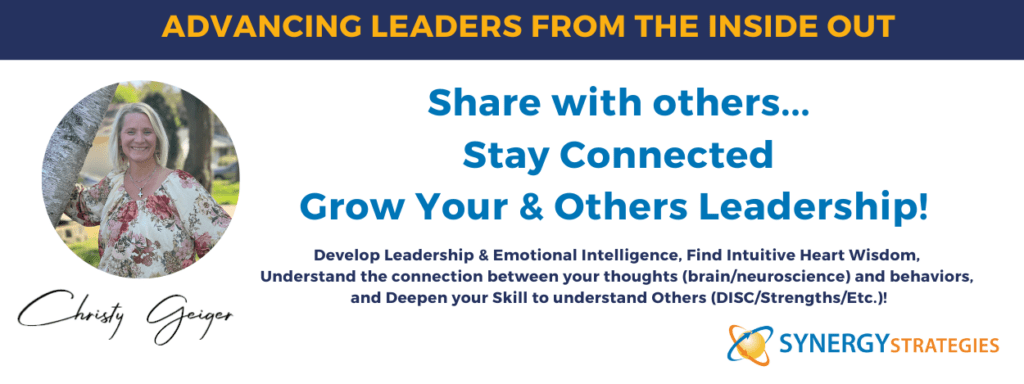Whether you work from an open-concept office, a private office, or a home office, interruptions and lack of organization can lead to frustration and burnout. High-performing leaders know the importance of taking control of their work environment to boost productivity and reduce stress. By creating a high-performance workday, you can expand your time, increase efficiency, and leave room for both success and enjoyment.
Top 10 Steps to a High-Performance Workday
- Plan your week with peak energy in mind: Start by planning your entire week. Identify when you have the most energy and focus each day, and align your most critical tasks during these times to maximize productivity. Thing about “block planning” that teachers do, or you had in school. Plan your week with “blocks” of time for your key responsibilities and top areas of focus.
- Schedule activities, including breaks: Time blocking is key. Schedule tasks, from meetings and projects to breaks, travel, and quiet work time. This helps prevent overscheduling and keeps your day balanced. While it can be overwhelming to have every minute scheduled, think of it more as creating “buckets” of time to support your focus. The details within that time can be more dynamic. The “buckets/blocks” are just holding bins to collect emails, tasks, projects, calls, and whatnot so that you can work efficiently in that time and ensure getting to all priorities. White space does matter, which is why you want to include blocking lunch (to make sure you take it), breaks, and even ideally, 2 hours of “flex” time for the unexpected and emergencies.
- Group similar activities together: Use task batching to streamline your work. Group similar activities—like making calls, responding to emails, and preparing reports—into dedicated time blocks for better focus.
- Tackle your most important task first: High performers prioritize. Start your day by addressing the biggest, most important task. I like the Brain Tracy concept of “FROG TIME” and “eating” one frog (whatever you are procrastinating) each day. This boosts momentum for the rest of the day.
- Break down large projects into manageable chunks: For big projects, create smaller, actionable steps. After completing each step, switch to a different task or take a short break to keep your energy up and avoid burnout. Check your to-do list. Is it actionable items or projects? Projects on to-do lists often create overwhelm and shut down because they are simply too big. Write the steps, not the project.
- Reward yourself for completed tasks: Celebrate wins. Use mini-rewards—like a coffee break, a short walk, or a healthy snack—to give yourself a boost after finishing key tasks.
- Stay flexible and adjust your schedule as needed: Be adaptable. High-performance leaders know that unexpected changes are inevitable, so they stay flexible and adjust their schedules without losing momentum. Another trick with blocks is if you missed a block or need to go to an unexpected meeting you SWAP that time with your “flex” block of time. The “block plan” helps to create structure but like teachers and school dynamics, if there was a fire drill during the English block, you still have English, you just flex it to another time to fit it in. By taking a little step each day creates significant long-term progress.
- Delegate tasks when possible: Don’t try to do everything yourself. Delegate tasks that others can handle so you can focus on the work that truly requires your attention and expertise. Remember if you are delegating, do that before you start your tasks to give others time to work your projects into their day. Also, remember everyone has “toilet scrubbing” work (work they don’t like to do). Delegation is for things others can do better or faster than you, while you are doing things you can do better or faster than others and match the level of work you need to be doing. You don’t delegate filing because it is below you, you do delegate filing if you are doing that to procrastinate an important action you need to be doing and you do delegate filing if it is a reoccurring task that someone that supports you can automate and streamline.
- Keep interactions brief yet positive: Efficient communication is essential. Offer a kind word or compliment to those you interact with, then move on to your next task. This fosters positive relationships without sacrificing time. Communication is becoming more important as the volume of change, complexity and the noise around us increases, and so does miscommunication so frequent communication is useful for clarity, focus, and staying in alignment.
- Close the day by resetting for tomorrow: End your day by clearing your desk, reviewing the next day’s schedule, and leaving work at the office. A clean space and a clear plan set you up for success the following day. Plus while you don’t want to take mental and emotional homework home with you, when you make a plan for the next day and have your outline and calendar in mind, your subconscious mind will be working on it and organizing so when you get to it the next day you can move quicker.
A high-performance workday isn’t about perfection—it’s about being intentional and strategic with your time. Steps like this can increase productivity, improve focus, and create more time for the things that matter most, both in and out of the office. What do you do to optimize your workday and time? What habits help you stay organized and get things done? Think about your most productive day in the past few months. What did you do that day that was a game-changer? How can you recreate that for more days? While sometimes we need to slow down, pause, and take life in, if we can manage our time well, it allows us to lead ourselves and others better, leveraging our time and providing more time for that needed downtime. What action can you take today to create a high-performance workday?






